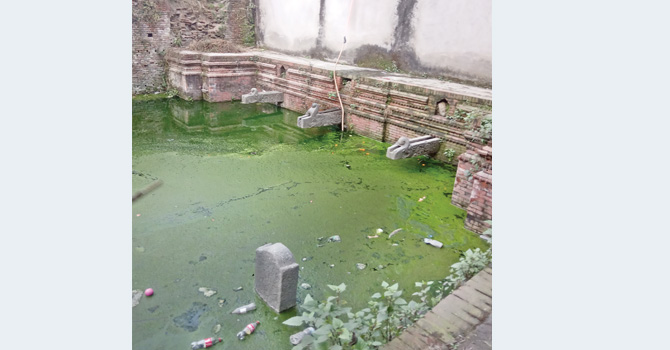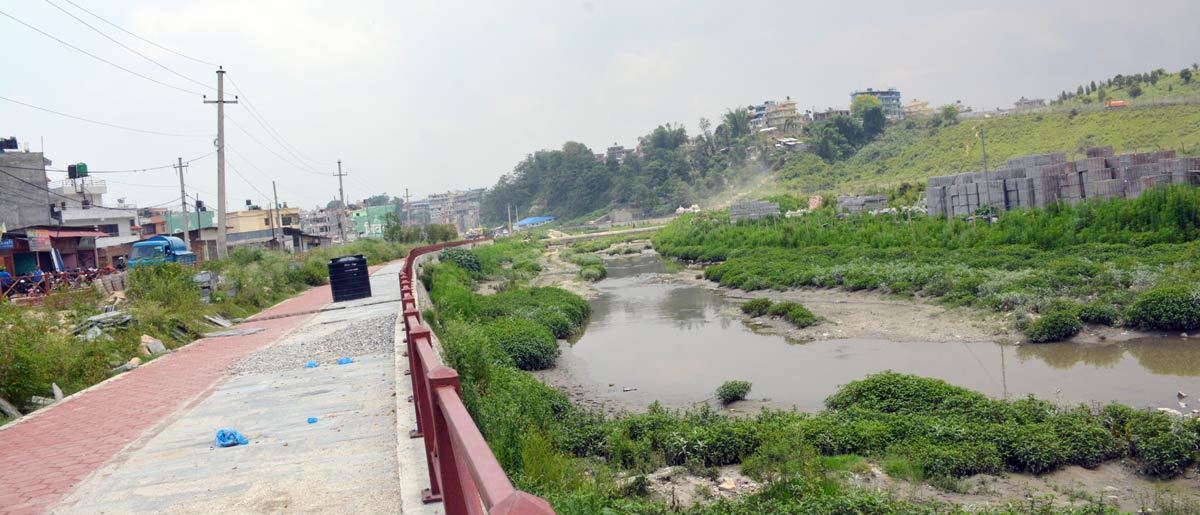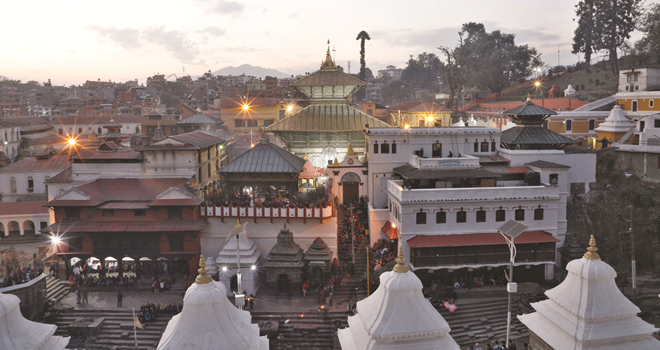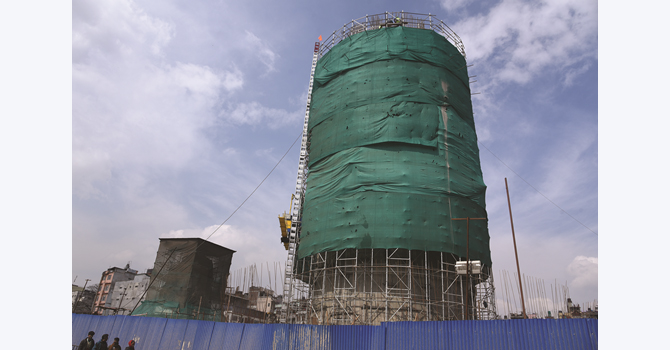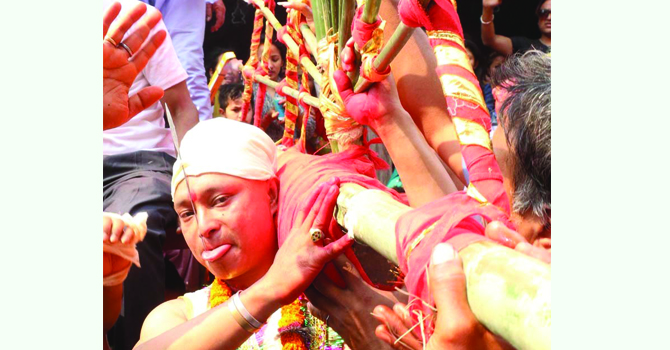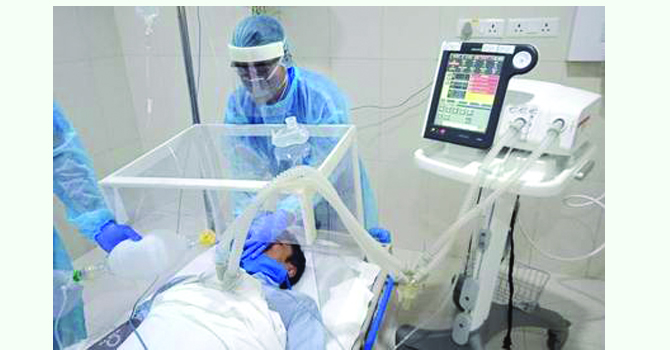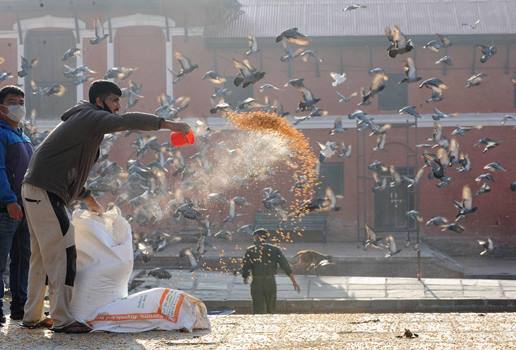KMC, campaigners team up to revive stone spouts in capital
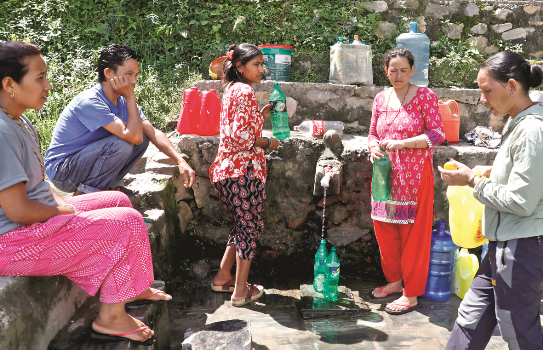
By Binu Shrestha
Kathmandu, July 3: The stone spouts or dhunge dhara, which are called hiti in Newari, were major sources of water in the Kathmandu Valley in the past. But over time most of them have either vanished or are in miserable condition, while others have dried up.
Safely managed water, sanitation, and hygiene (WASH) services are an essential part for preventing the spread of COVID-19. But many Kathmanduites face shortage of water even to wash hands frequently.
“We would not have faced the present crises of water had not the hitis been buried and had the recharge areas not been sealed off in the name of urbanisation,” said Yadav Lal Kayastha, a local of Asan and a campaigner.
We are now forced to buy water in lack of adequate supply of drinking water in Asan and other areas of the city.”
With the spread of novel coronavirus, the importance of individual hitis at the local levels has been realised, he added.Kayastha has begun the hiti preservation campaign. During the ongoing
lockdown period, his team succeeded to excavate two hitis in the Swayambhu area.
In the presence of the officials from the Department of Archeology (DoA), they excavated a hiti on the way to Bajra Hotel in Bijeshwori. After examining the bricks and other items used to build it, the officials of DoA declared that it was a Malla era hiti.
Excavation work on another hiti located on the way to Bhuikhel of Swayambu has recently begun.
Giving the example of buried hiti of Ranipokhari Corner Team premises, Suresh Dangol of Asan said that it was used to clean hands, legs and take bath before entering the Asan after returning from other cities and a long travel.
There was a quarantine home behind the Annapurna Temple of Asan to stay for 14 days to prevent infection of virus and other diseases, he said.
Sanjeev Bickram Rana, executive director the Kathmandu Valley Water Supply Management Board (KVWSMB), said that the daily demand for water in the Kathmandu Valley is more than 340 million litres per day, whereas the supply amounts only 150 million litres per day in wet season and scanty 90 million litres in dry season.
The gap between the demand and supply of drinking water is very high, indicating poor distribution of drinking water and its crisis in the Kathmandu Valley, he said.
Rana said that importance of regular supply of water was felt more intensely in the current COVID-19 pandemic. But the supply of water has not been at par with the demand of valley people.
If the centuries-old hitis are allowed to run like in the past, the valley dwellers will not face the shortage of water as they do now.
Giving priority to hiti and pond preservation project, the KVWSMB has signed a Memorandum of Understanding (MoU) with the Madhyapur Thimi Municipality and Mahalaxmi Municipality.
“We cannot begin hiti and pond preservation task in all municipalities simultaneously. In the first phase, the hiti and pond preservation task has begun from these two municipalities,” Rana said.
According to a survey report of KVWSMB in 2019, 179 stone spouts existed in Kathmandu Metropolitan City. Of them, 52 have been lost while 127 are in existence.
As regards the water flow from the existing stone spouts, 79 have gone dry, eight are on the verge of drying up while 40 still have water flowing from them.
The daily discharge capacity of the water spouts traced in the KMC is estimated to be 382,399 liters, the report said.
Recent News

Do not make expressions casting dout on election: EC
14 Apr, 2022
CM Bhatta says may New Year 2079 BS inspire positive thinking
14 Apr, 2022
Three new cases, 44 recoveries in 24 hours
14 Apr, 2022
689 climbers of 84 teams so far acquire permits for climbing various peaks this spring season
14 Apr, 2022
How the rising cost of living crisis is impacting Nepal
14 Apr, 2022
US military confirms an interstellar meteor collided with Earth
14 Apr, 2022
Valneva Covid vaccine approved for use in UK
14 Apr, 2022
Chair Prachanda highlights need of unity among Maoist, Communist forces
14 Apr, 2022
Ranbir Kapoor and Alia Bhatt: Bollywood toasts star couple on wedding
14 Apr, 2022
President Bhandari confers decorations (Photo Feature)
14 Apr, 2022


